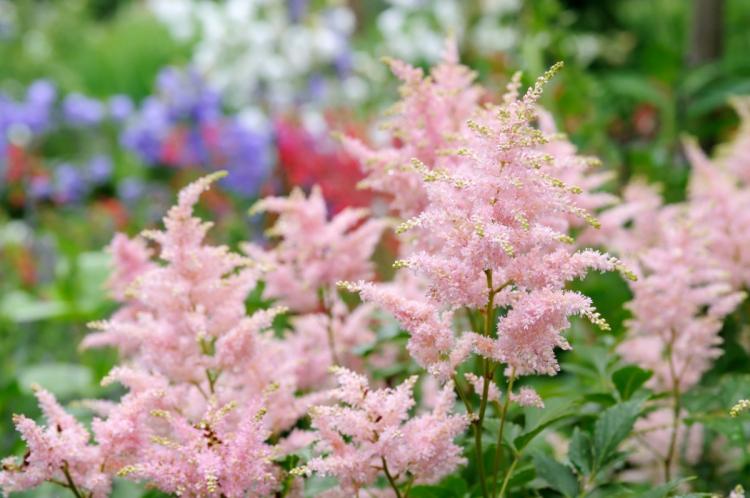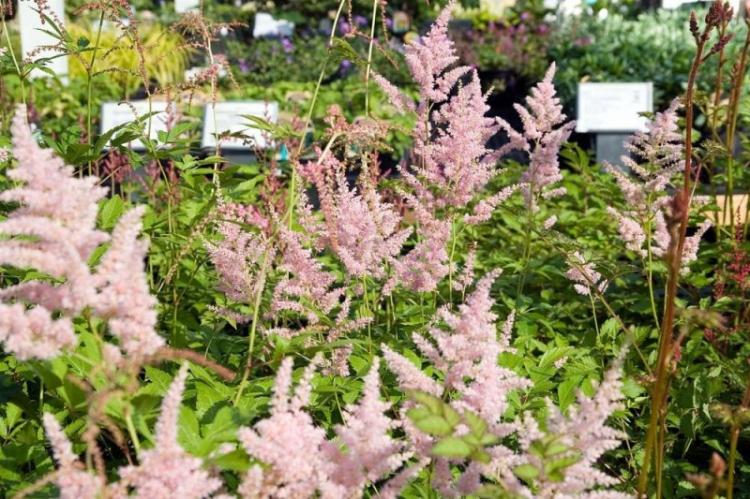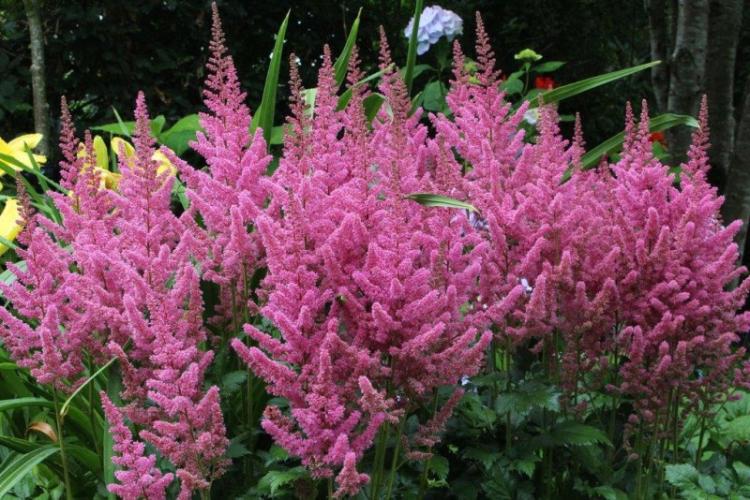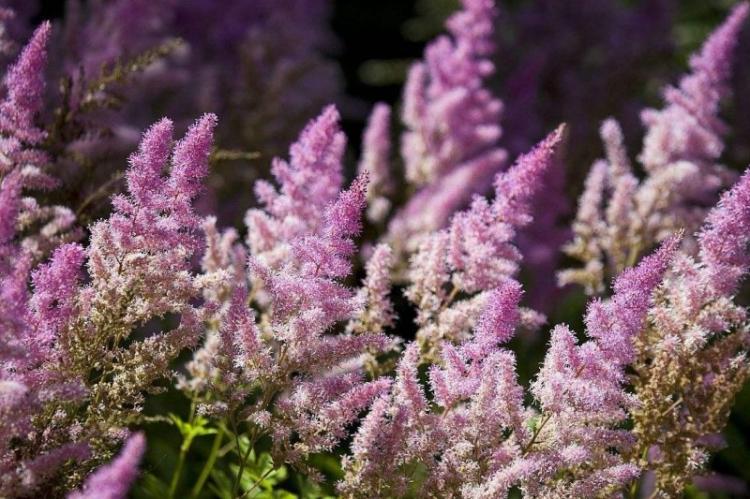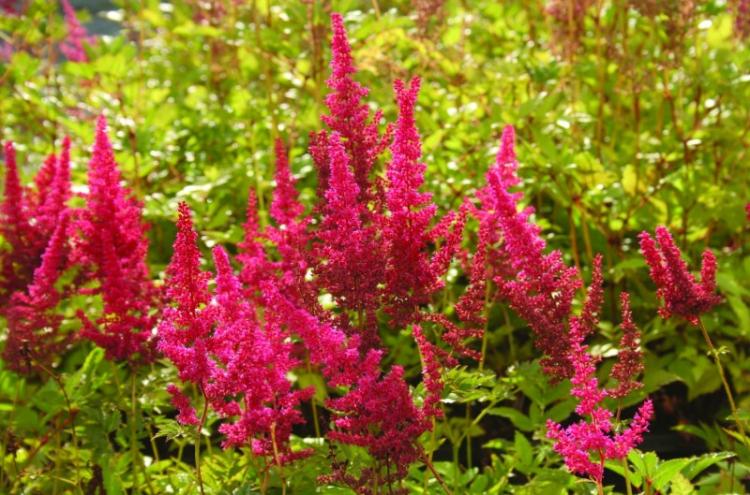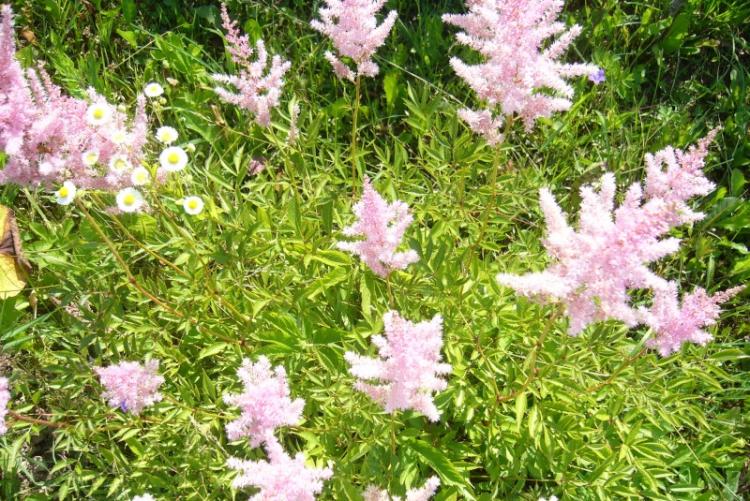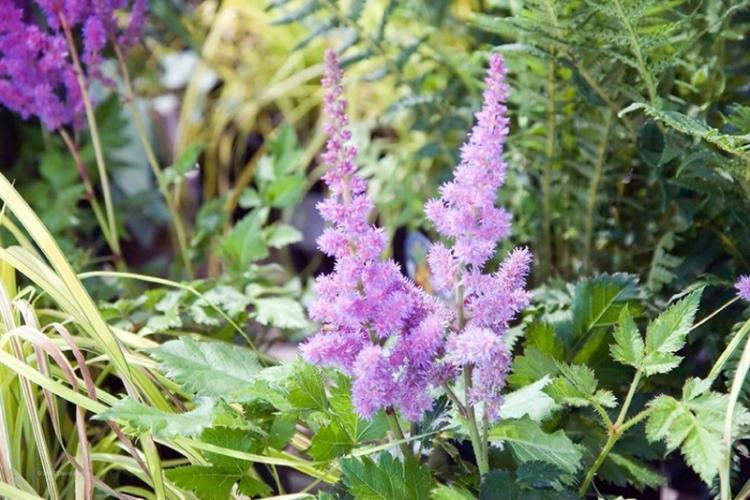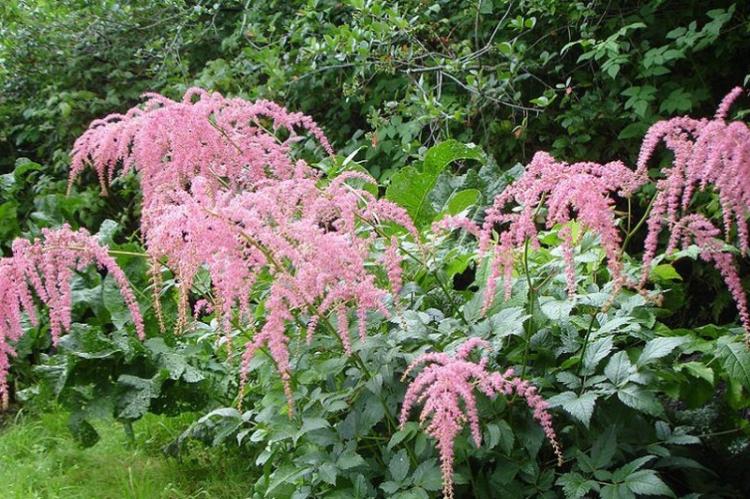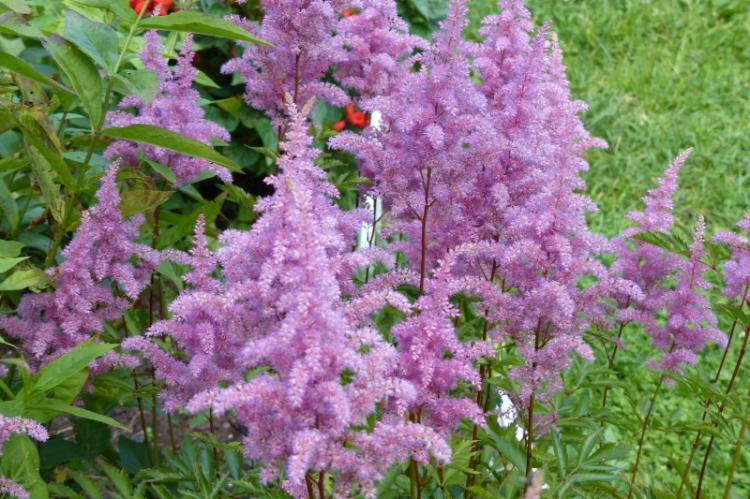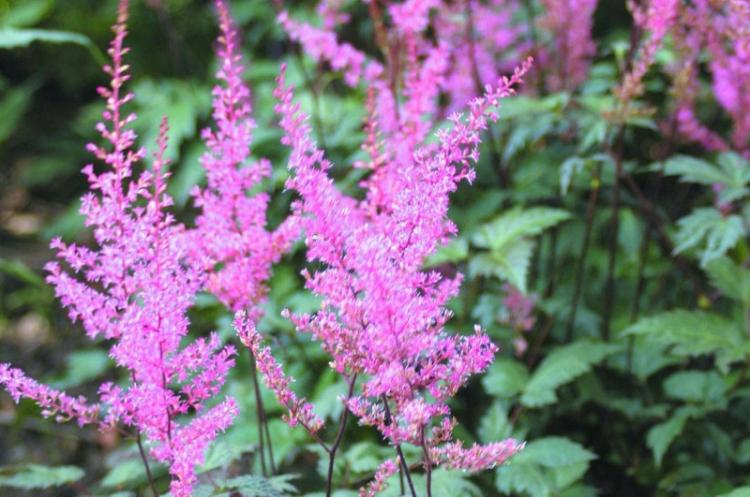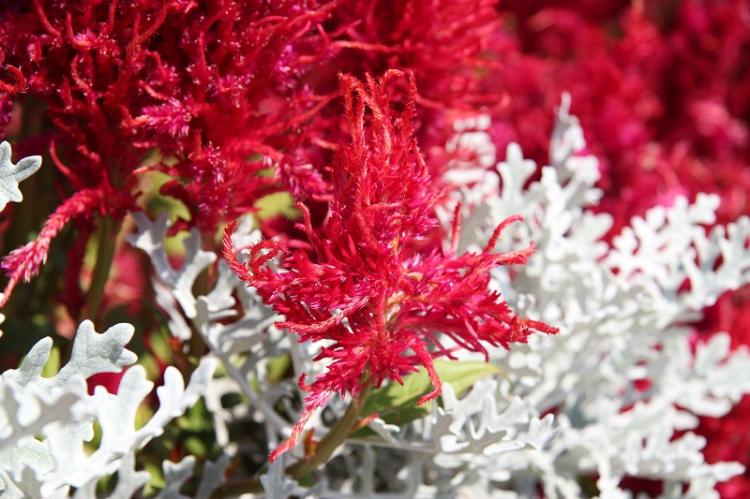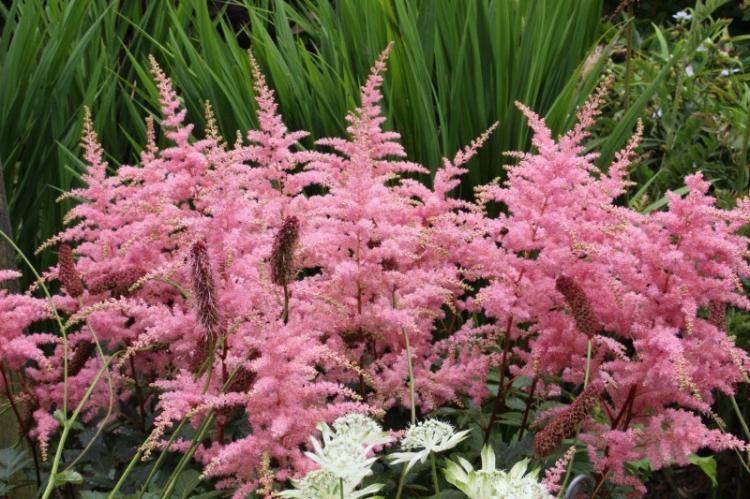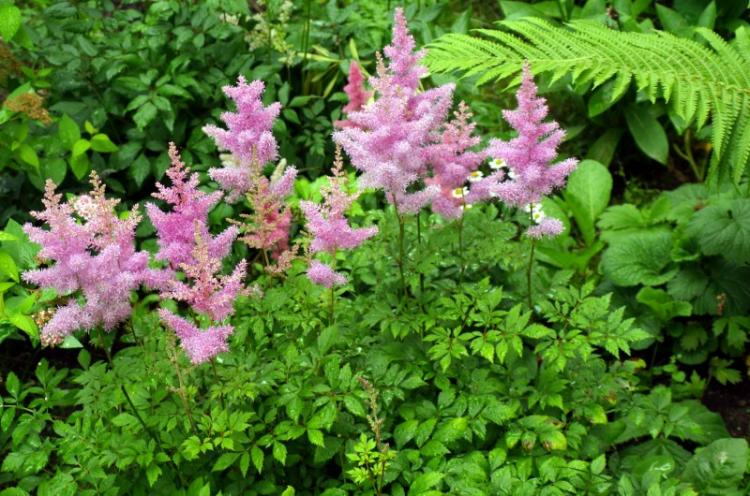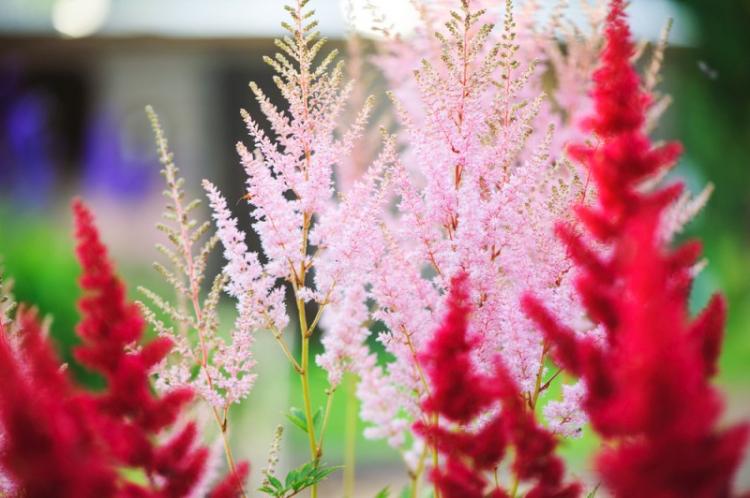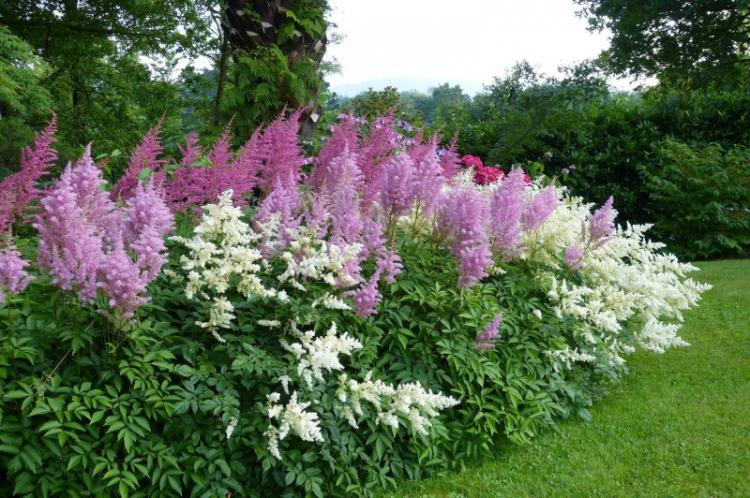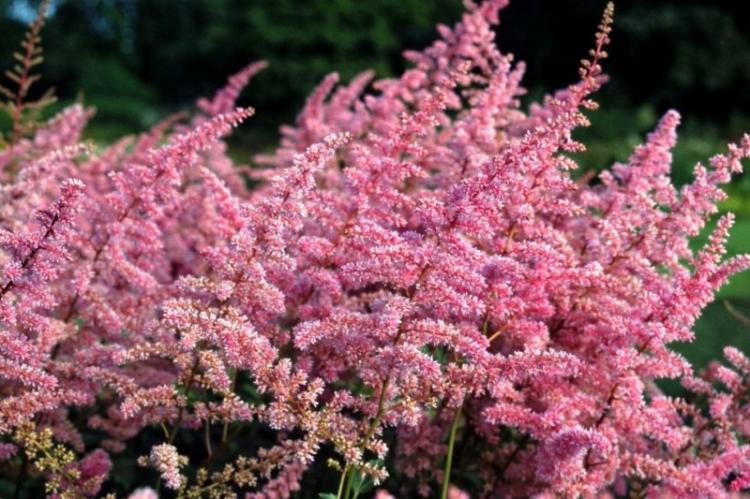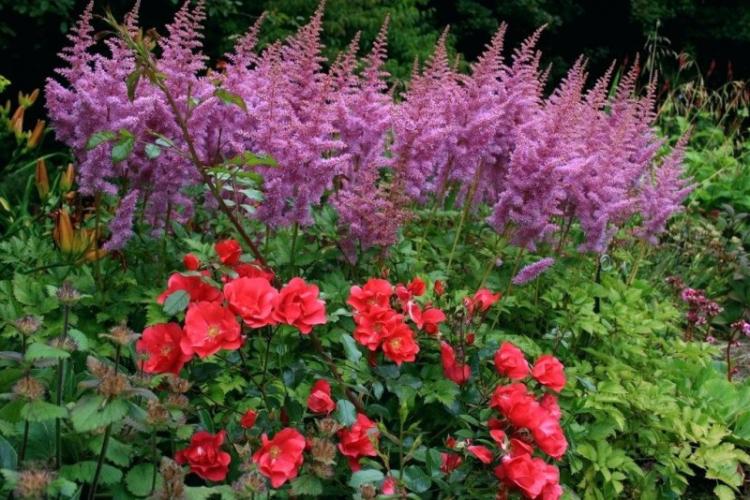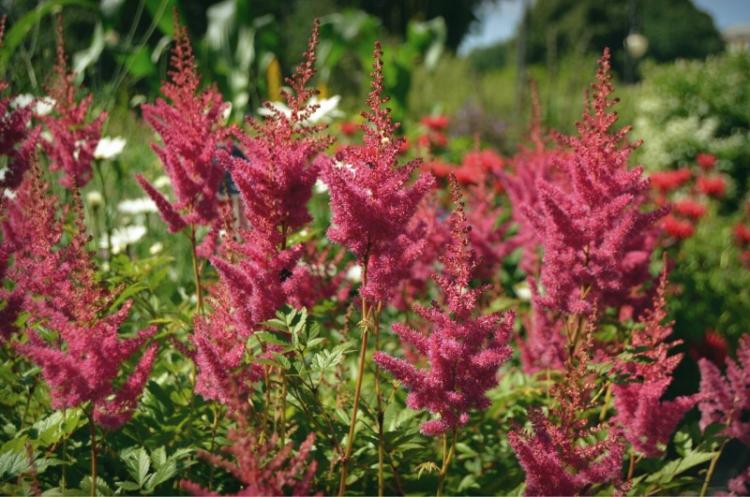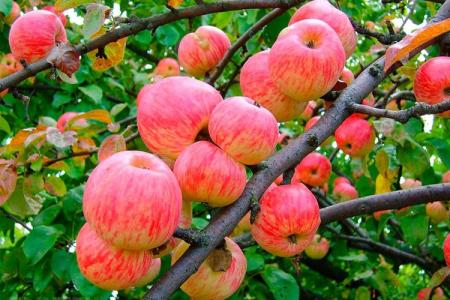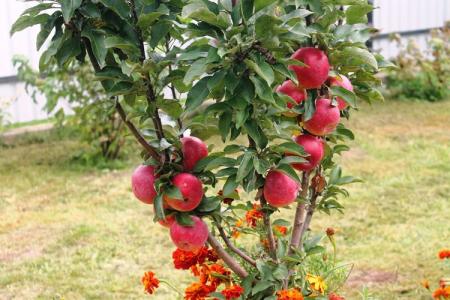
If you are tired of boring single-type flower beds, and you want to beautifully decorate the site, then the elegant astilba is created especially for you! Many are not familiar with this flower - and completely in vain, because it has practically no equal. It is especially good for him in shady gardens, so if you don't have enough sun in your yard, we will tell you what to do!
general characteristics
Astilba is a herb with a developed woody root system. Perennial shoots can grow up to 2 m in height, but there are also miniature varieties up to only 8 cm. Matte dark leaves on long petioles acquire a dark green, bronze or reddish tint.
The peculiarity of astilba is its expressive apical inflorescences up to 60 cm, collected from small lace flowers. Shades range from pink to lilac, white to bright red, lilac to purple.

Sometimes there are pyramidal, paniculate, diamond-shaped and even drooping inflorescences. The pyramidal lateral rods decrease uniformly upward and diverge from the main axis at an almost right angle. In diamond-shaped ones, they diverge under the sharp one: this is characteristic of the Japanese astilbe.
In the garden, the flower is in great harmony with other plants that love shade. For example, with hellebore, bergenia and podophyllum, or vice versa - with thin and graceful lilies of the valley, irises, tulips, hornbeam. Plant astilba in monogroups near other shrubs, and one by one they will dilute coniferous garden plantings.
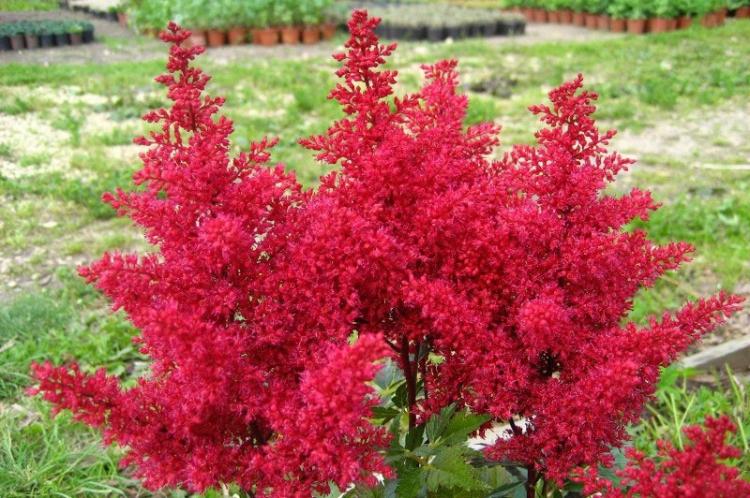
Distribution history
Astilba came to us from America and East Asia, where it grows well in the middle of forests and on the banks. It came to Europe from the Japanese islands towards the end of the 18th century, when it was brought by hunters for outlandish species.
In ancient China, astilbe was used as a medicine, and medicinal mixtures and even spices are still prepared from it. It is believed that it has a tonic, pronounced anti-inflammatory and antipyretic effect.
Even the origin of the name astilba is unusual, as is the flower itself: literally it means “without shine”. This is what Lord Hamilton called the new look, who wanted to emphasize the matte elegant leaves.
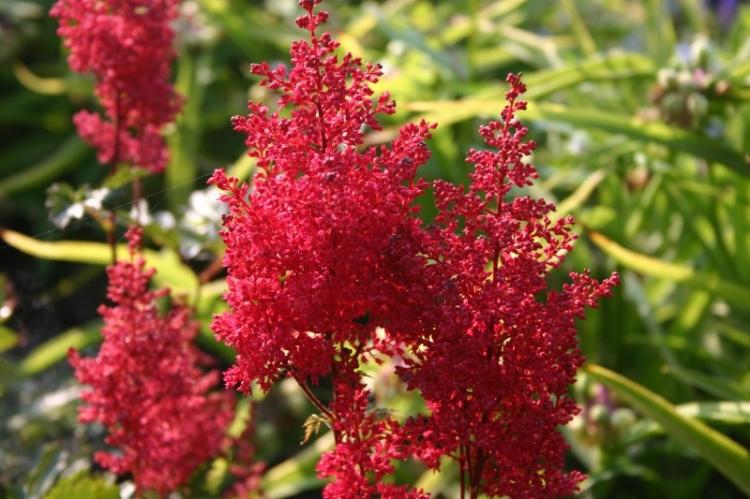
Types of astilba
According to various sources, astilbe has up to 40 species, but only 10-12 of them are planted in gardens. They differ from each other not only in appearance, but also in flowering time: early, middle and late, from June to August.
Common Astilbe
This is a decorative openwork hybrid in the form of small graceful bushes up to 0.5 m in height. The variety does not tolerate heat and dry air, but under favorable conditions it is deservedly considered one of the most beautiful with its delicate loose flowers against the background of bronze foliage.
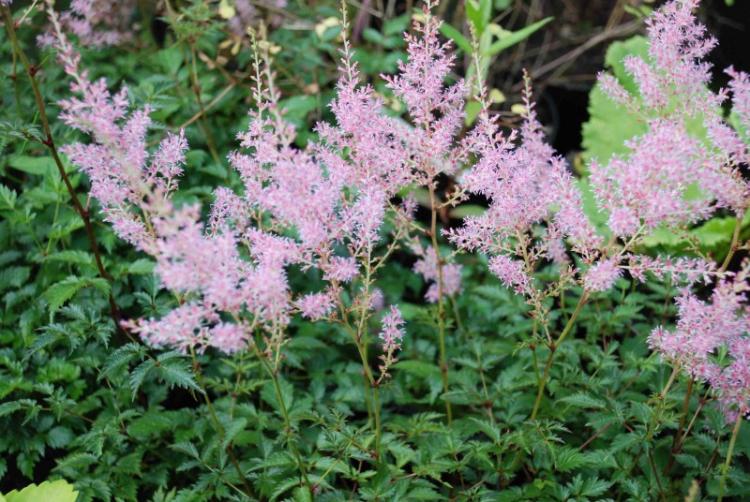
Astilba Thunberg
It is a very graceful variety with dense white flowers, gathered in large racemose inflorescences. In diameter, they reach 10 cm, and in length - up to 25 cm, and at the same time they bloom until August. Openwork brushes look even brighter against the complex jagged leaves of a rich green hue.
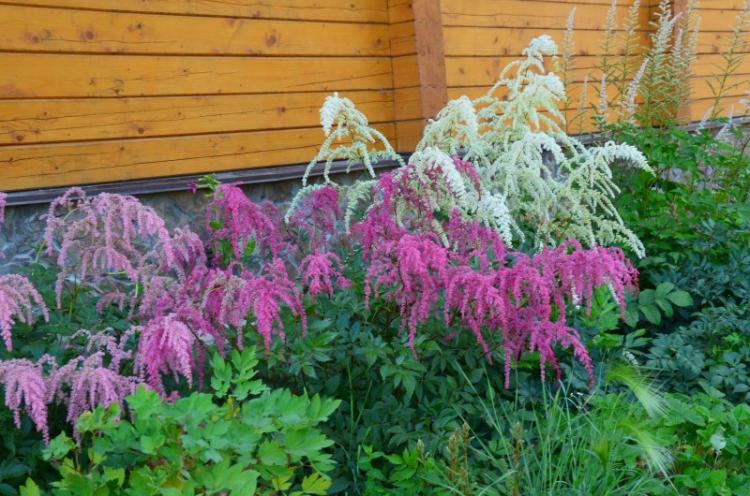
Astilba Arends
This is the main and most popular species, on the basis of which dozens of hybrids have been bred. Powerful sprawling bushes in the form of a ball or pyramid grow a meter. Against the background of dark green foliage, white, lilac, pale pink and scarlet inflorescences stand out, which bloom magnificently for up to 35 days.
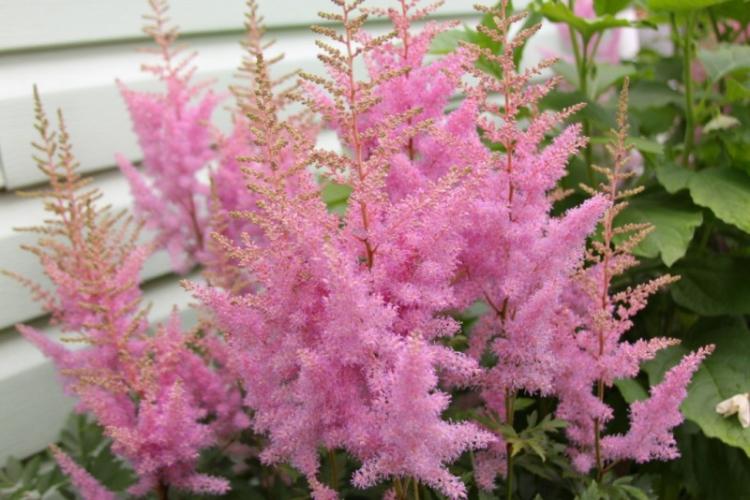
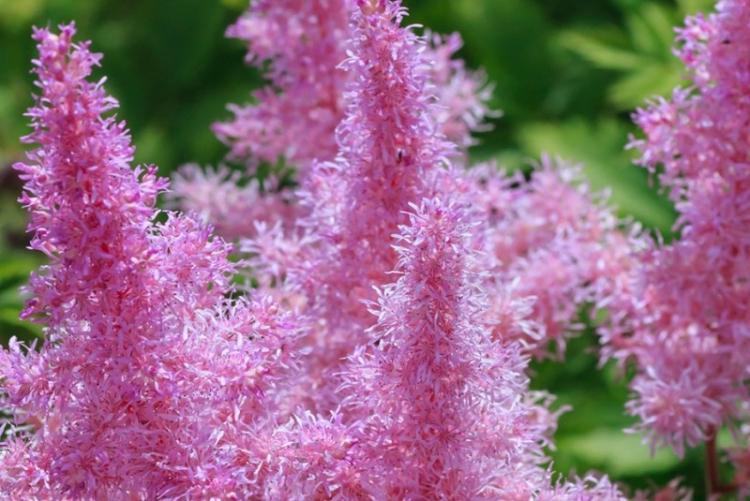
Astilba David
A sprawling, powerful and wide bush grows up to 1.5 m and is distinguished by its impressive forms. The second feature of the variety is pale, wrinkled leaves of an unusual configuration with brown veins. The dropped inflorescences are collected from lacy pink and lilac flowers that look fresh and romantic.

Japanese astilba
Miniature decorative variety does not grow above 0.7-0.8 meters with dense glossy leaves in veins.Fluffy panicles-inflorescences are colored white, pink or deep burgundy. Modern varieties are resistant to cold weather and easily take root in difficult conditions.
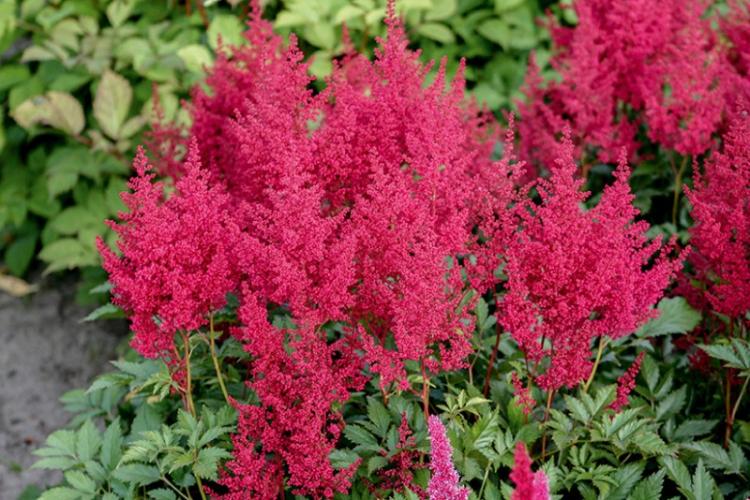
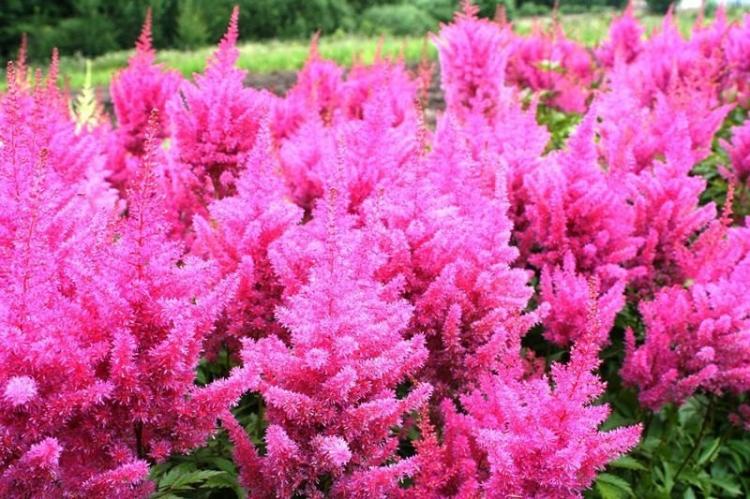
Astilba nude
This is an unusual dwarf bush, whose height rarely exceeds 13 cm. The small, rounded shrub is also notable for its bronze leaves, which clearly stand out against the background of the grass.
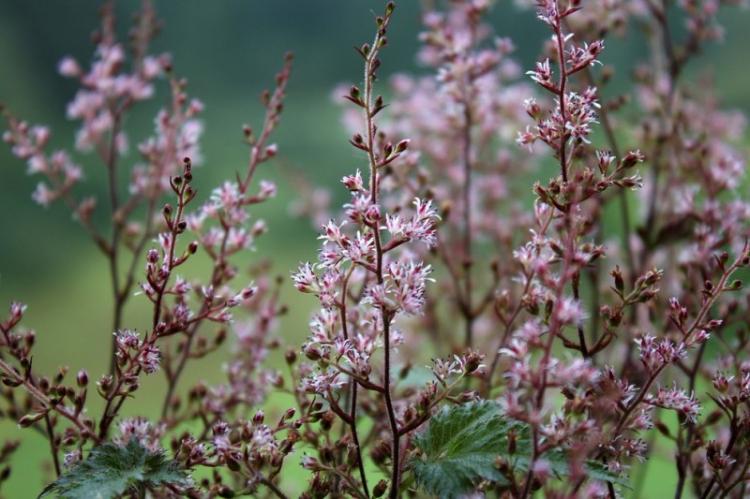
Chinese astilba
Another classic variety up to 110 cm high with long and dense lilac inflorescences. Less common are white or pink flowers, but they are always small and delicate. An interesting feature is the unusual configuration of foliage: large basal plates with long legs upward become smaller and more graceful.

Astilba care
The growth rate and splendor of astilbe depends on the correct choice of a site for planting, on the level of heat and moisture. It is frost-resistant, almost not afraid of pests with diseases, pleases with abundant flowering.
Temperature
Astilba tolerates the conditions of temperate latitudes well, but active vegetation begins only when the temperature is stable above 10 degrees. In winter, the entire ground part dies off: this is completely normal, in spring the flower will grow again.
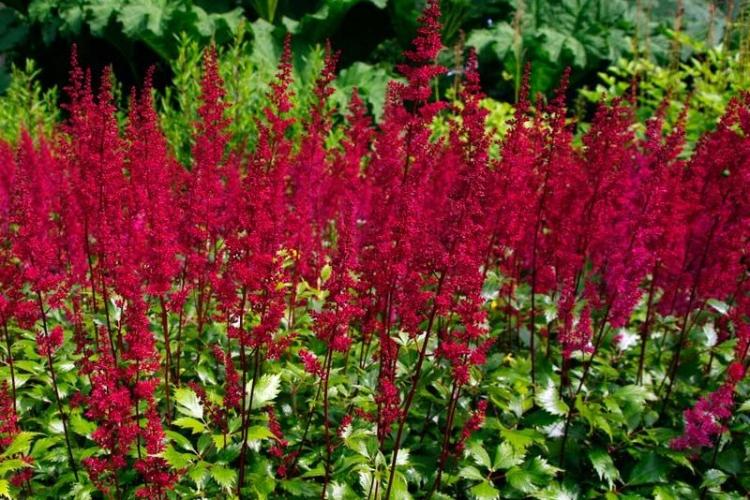
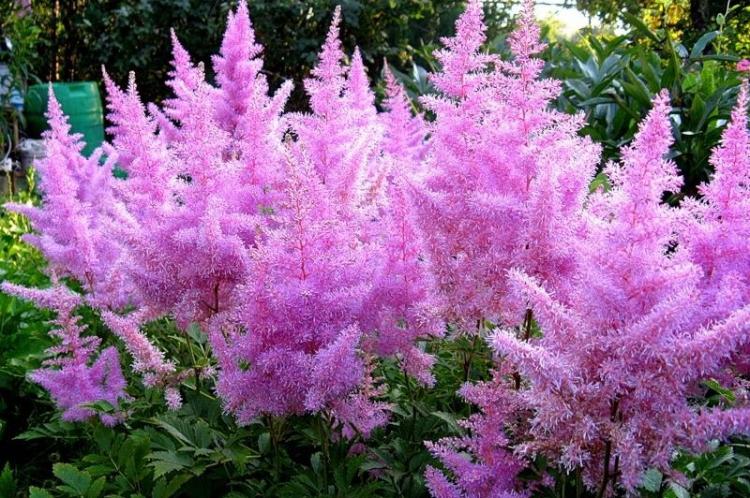
Lighting
Astilba does not need an abundance of light and continues to bloom well and densely even in the shade. Its ideal conditions are sparse shade, but varieties with light flowers do well in the sun. Then their flowering is almost twice as intense, but proportionally shorter.
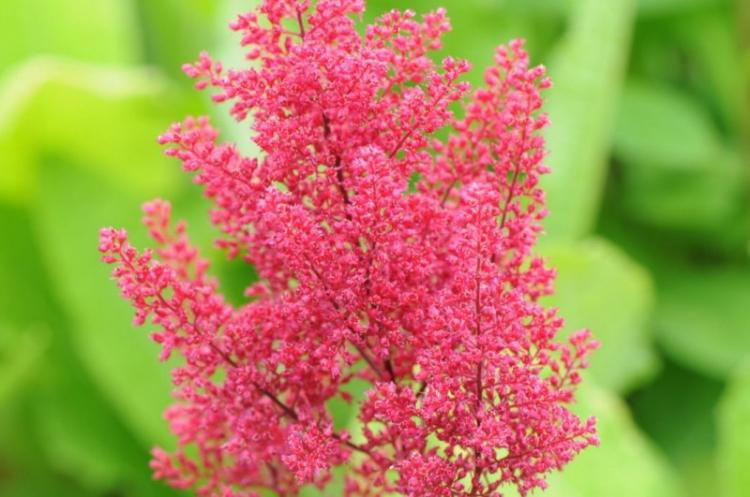
Watering
Watering is the only difficult moment in caring for astilba, because it is a very moisture-loving flower that prefers a monsoon climate. She categorically cannot cope with prolonged drought, especially in combination with poor soil and heat. Therefore, you need to water the seedlings in the sun twice a day, and in a comfortable shade, weekly watering is enough.
At the same time, astilba does not tolerate excess moisture well: including a high level of groundwater. Because of this, the roots grow out and rot, so do not forget about high-quality reliable drainage or choose higher places. Be sure to mulch the soil: this reduces overheating, guarantees air permeability, friability, retains moisture, but prevents rotting.
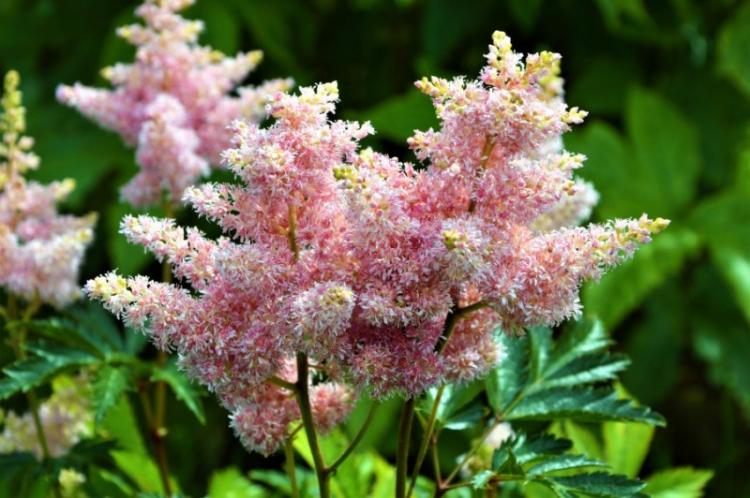
Fertilizers and feeding
The first portion of fertilizers is applied even during planting, but regular feeding is needed for the development and growth of astilbe. Especially if you have been growing a perennial flower in one place for years. For example, nitrogen fertilizers contribute to the renewal of leaves after winter, phosphorus fertilizers - lush flowering, and potash fertilizers - the formation of seeds.
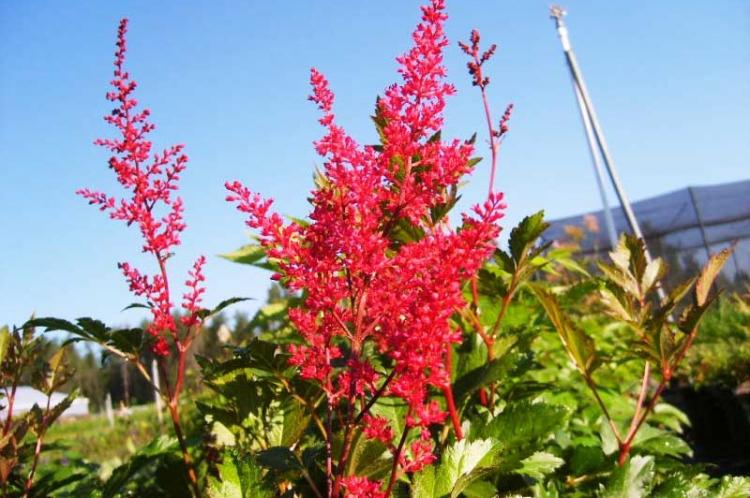
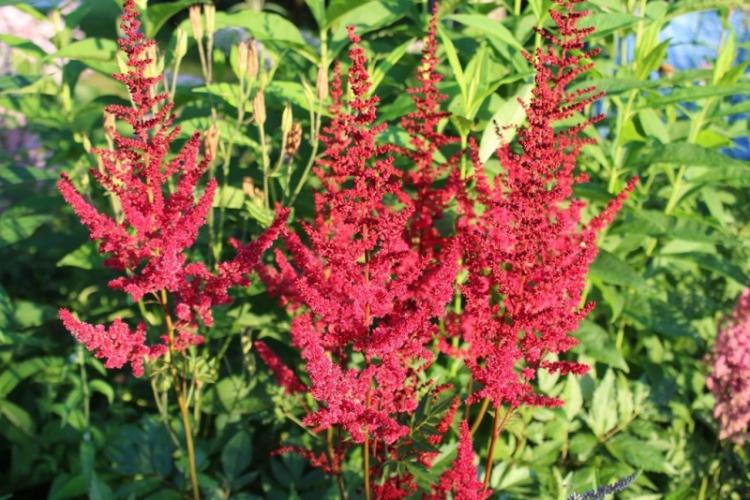
Pruning
The decorativeness of the dense and rapidly growing astilbe directly depends on regular pruning. And be sure to remove all faded inflorescences before the formation of seed pods. Especially if you use astilbe for decoration and landscape design.

Planting and breeding
When choosing a place for planting, be sure to take into account the flowering time of a particular variety. July species love secluded corners in the shade, and early or late ones tolerate the sun normally.
For planting, it is important to choose the right rhizome without rotting, dead or damaged parts. It must be healthy, not dry or too wet. The quality of the planting material primarily depends on how thick, fluffy and beautiful astilbe grows.
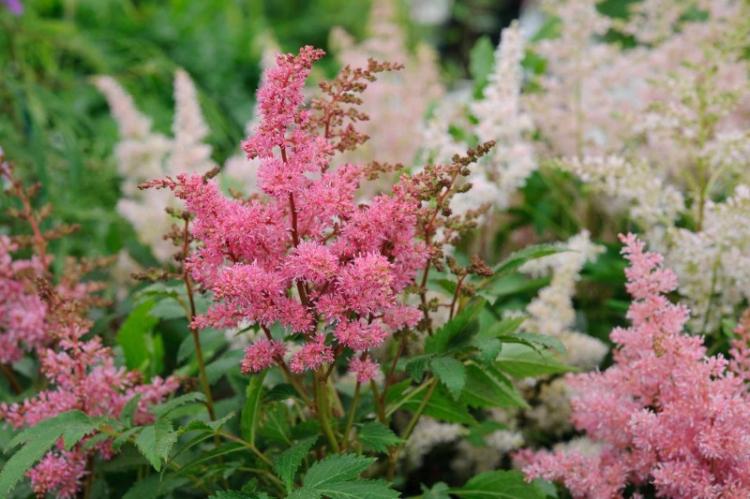
The distance between the seedlings depends on the variety and its size: tall shrubs cannot be planted closer than every 50 cm, and for low ones, 30 cm is enough. The depth of the hole also depends on the size: the rhizome should be located freely in it.
Make sure that the growing point is on the surface and not covered with soil. To retain moisture and improve the soil, but not harm the flower, use mineral fertilizers, bone meal, ash and hydrogel. Over the course of a year, the astilbe stretches a few centimeters, therefore, the opening part of the rhizome must be painted with earth in time.
Seed propagation is not used for perennial ornamental varieties - it is not effective enough. The most reliable, simple and proven way is to divide the rhizome of the excavated mother bush into several parts. And in the spring you can use buds and cuttings - they easily take root and grow quickly.
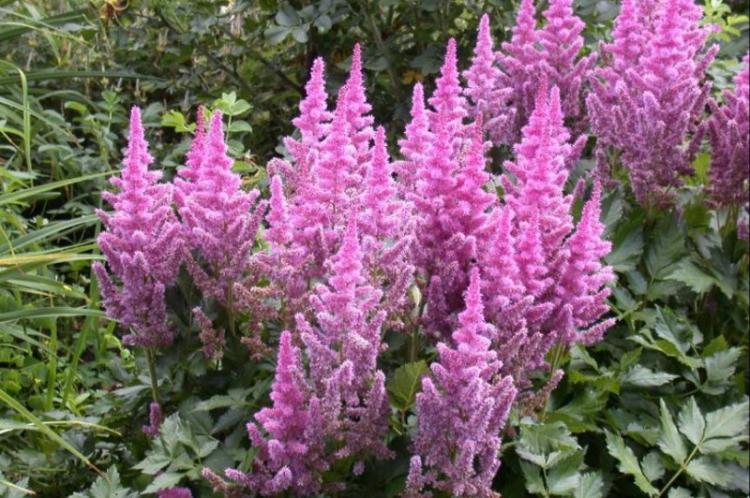
Pest and disease control
Astilba belongs to those rare, but very convenient garden plants that are practically not susceptible to diseases and pests. Sometimes rhizomes are attacked by rootworm nematode, which does not respond to classical insecticides. In this case, the diseased bushes will have to be removed along with the infected soil.
The second problem is the drooling penny, which can be noticed if the leaves began to grow less densely and slowly. For prevention, it is advisable to collect pests by hand and carry out regular processing.

Astilba - photo
In order to appreciate astilba at its true worth and in all its glory, we offer this selection of photographs. Delicate and unusual flower pleases with variety and gracefully decorate any garden!
